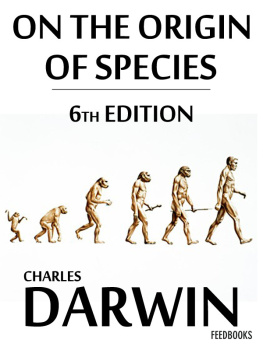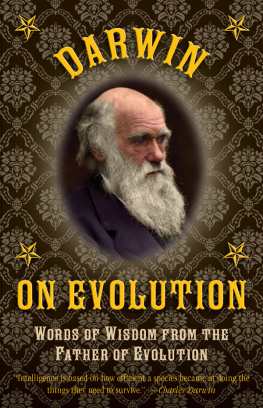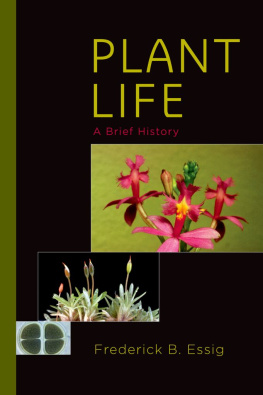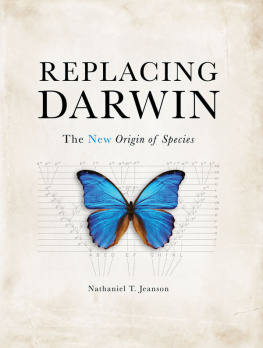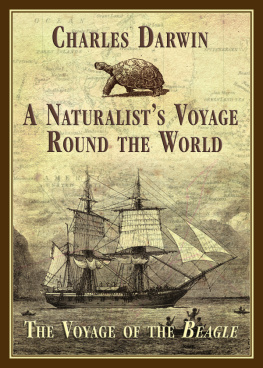THE DIFFERENT FORMS OF FLOWERS ON PLANTS OF THE SAME SPECIES
CHARLES DARWIN

This 2011 edition published by Barnes & Noble, Inc.
All rights reserved. No part of this publication may be reproduced, stored in a retrieval system, or transmitted, in any form or by any means, electronic, mechanical, photocopying, recording, or otherwise, without prior written permission from the publisher.
Barnes & Noble, Inc.
122 Fifth Avenue
New York, NY 10011
ISBN: 978-1-4114-3968-9
INTRODUCTION
T HE subject of the present volume, namely the differently formed flowers normally produced by certain kinds of plants, either on the same stock or on distinct stocks, ought to have been treated by a professed botanist, to which distinction I can lay no claim. As far as the sexual relations of flowers are concerned, Linnus long ago divided them into hermaphrodite, moncious, dicious, and polygamous species. This fundamental distinction, with the aid of several subdivisions in each of the four classes, will serve my purpose; but the classification is artificial, and the groups often pass into one another.
The hermaphrodite class contains two interesting sub-groups, namely, heterostyled and cleistogamic plants; but there are several other less important subdivisions, presently to be given, in which flowers differing in various ways from one another are produced by the same species.
Some plants were described by me several years ago, in a series of papers read before the Linnean Society,pistil continues growing for a long time, so that if old and young flowers are compared they might be thought to be heterostyled. Again, a species tending to become dicious, with the stamens reduced in some individuals and with the pistils in others, often presents a deceptive appearance. Unless it be proved that one form is fully fertile only when it is fertilised with pollen from another form, we have not complete evidence that the species is heterostyled. But when the pistils and stamens differ in length in two or three sets of individuals, and this is accompanied by a difference in the size of the pollen-grains or in the state of the stigma, we may infer with much safety that the species is heterostyled. I have, however, occasionally trusted to a difference between the two forms in the length of the pistil alone, or in the length of the stigma together with its more or less papillose condition; and in one instance differences of this kind have been proved by trials made on the fertility of the two forms, to be sufficient evidence.
The second sub-group above referred to consists of hermaphrodite plants, which bear two kinds of flowersthe one perfect and fully expandedthe other minute, completely closed, with the petals rudimentary, often with some of the anthers aborted, and the remaining ones together with the stigmas much reduced in size; yet these flowers are perfectly fertile. They have been called by Dr. Kuhnwill be described in the last chapter of this volume. They are manifestly adapted for self-fertilisation, which is effected at the cost of a wonderfully small expenditure of pollen; whilst the perfect flowers produced by the same plant are capable of cross-fertilisation. Certain aquatic species, when they flower beneath the water, keep their corollas closed, apparently to protect their pollen; they might therefore be called cleistogamic, but for reasons assigned in the proper place are not included in the present sub-group. Several cleistogamic species, as we shall hereafter see, bury their ovaries or young capsules in the ground; but some few other plants behave in the same manner; and, as they do not bury all their flowers, they might have formed a small separate subdivision.
Another interesting subdivision consists of certain plants, discovered by H. Mller, some individuals of which bear conspicuous flowers adapted for cross-fertilisation by the aid of insects, and others much smaller and less conspicuous flowers, which have often been slightly modified so as to ensure self-fertilisation. Lysimachia vulgaris, Euphrasia officinalis, Rhinanthus crista-galli, and Viola tricolor come under this head. The smaller and less conspicuous flowers are not closed, but as far as the purpose which they serve is concerned, namely, the assured propagation of the species, they approach in nature cleistogamic flowers; but they differ from them by the two kinds being produced on distinct plants.
With many plants, the flowers towards the outside of the inflorescence are much larger and more conspicuous than the central ones. As I shall not have occasion
It is a well-known yet remarkable fact that the circumferential flowers of many of the foregoing plants have both their male and female reproductive organs aborted, as with the Hydrangea, Viburnum and certain Composit; or the male organs alone are aborted, as in many Composit. Between the sexless, female and hermaphrodite states of these latter flowers, the finest gradations may be traced, as Hildebrand has shown. and, as a consequence, the corolla became, through compensation, more highly developed. This view, however, is not probable, for when hermaphrodite plants become dicious or gyno-diciousthat is, are converted into hermaphrodites and femalesthe corolla of the female seems to be almost invariably reduced in size in consequence of the abortion of the male organs. The difference in the result in these two classes of cases, may perhaps be accounted for by the matter saved through the abortion of the male organs in the females of gyno-dicious and dicious plants being directed (as we shall see in a future chapter) to the formation of an increased supply of seeds; whilst in the case of the exterior florets and flowers of the plants which we are here considering, such matter is expended in the development of a conspicuous corolla. Whether in the present class of cases the corolla was first affected, as seems to me the more probable view, or the reproductive organs first failed, their states of development are now firmly correlated. We see this well illustrated in Hydrangea and Viburnum; for when these plants are cultivated, the corollas of both the interior and exterior flowers become largely developed, and their reproductive organs are aborted.
There is a closely analogous subdivision of plants, including the genus Muscari (or Feather Hyacinth) and the allied Bellevalia, which bear both perfect flowers and closed bud-like bodies that never expand. The latter resemble in this respect cleistogamic flowers, but differ widely from them in being sterile and conspicuous. Not only the aborted flower-buds and their peduncles (which are elongated apparently through the principle of compensation) are brightly coloured, but so is the upper part of the spikeall, no doubt, for the sake of guiding insects to the inconspicuous perfect flowers. From such cases as these we may pass on to certain Labiat, for instance, Salvia Horminum, in which (as I hear from Mr. Thiselton Dyer) the upper bracts are enlarged and brightly coloured, no doubt for the same purpose as before, with the flowers suppressed.
In the Carrot and some allied Umbellifer, the central flower has its petals somewhat enlarged, and these are of a dark purplish-red tint; but it cannot be supposed that this one small flower makes the large white umbel at all more conspicuous to insects. The central flowers are said
The cases hitherto mentioned relate to hermaphrodite species which bear differently constructed flowers; but there are some plants that produce differently formed seeds, of which Dr. Kuhn has given a list. With the Umbellifer and Composit, the flowers that produce these seeds likewise differ, and the differences in the structure of the seeds are of a very important nature. The causes which have led to differences in the seeds on the same plant are not known; and it is very doubtful whether they subserve any special end.




